
#4 Silicon Valley Going Green: Accelerating Climate tech
Accelerators focused on helping new climate tech start-ups are popping up on a regular basis in California. This week’s ‘Going Green’ article explores some of the key “green” accelerators in the Bay Area and how they can help Danish climate tech entrepreneurs in different stages.
Silicon Valley is known for its thriving ecosystem of research institutions, corporates, start-ups, investors and accelerators – an ecosystem that has created the most unicorns in the world and some of the world’s most valuable and innovative companies. A key component of this ecosystem is the accelerators, helping start-ups to develop their initial products and business model, identify customer segments, secure resources, and offer networking opportunities. Renowned US accelerators like Y Combinator and Techstars have f.ex. assisted in the successes of tech companies such as Airbnb, Dropbox, and Stripe.
“Accelerators are the spiders in the web of start-up ecosystems” – New Energy Nexus, Accelerate This!
Climate tech accelerating in California
With increasing climate awareness and demand, several specialised climate tech accelerators have emerged for startups working to decarbonize global economies. Their mission is to nurture and connect green start-ups to business mentors, market intelligence, and venture capital. Importantly for climate tech start-ups, they also connect companies with corporate off-takers aiming to scale the businesses’ solutions as fast as possible. CEO of New Energy Nexus, David Kennedy explains the growing climate tech focus;
“The giant economic opportunity of climate tech is becoming understood in the Golden State. California – as the world’s leading innovation economy – wants to own that future. Already, electric vehicles are our largest export by value – larger than Apple, larger than agriculture, larger than wine, dope, Google or Facebook”. He continues;
“Accelerators are where the risk is now taken, as VCs have moved away from the early stage and want their bets to be de-risked. Without accelerators, government grant programs like the one we administer – the CalSEED.fund – there would be no deal flow sufficient to the scale and speed of this market. Disruption is upon us and the Californian community – from the Governor, the legislators, to the regulators and local cities – want it and want their communities to ride the wave. The engine of invention and ingenuity has only just begun to take on this opportunity.”
![]()
The world’s largest platform for clean energy entrepreneurship
As a global green frontrunner, the state of California has long been supporting climate tech entrepreneurship. A key example is the accelerator New Energy Nexus, established in 2004 under the name California Clean Energy Fund (CalCEF). The fund pioneered a new model of investing indirectly in companies through partnerships with VC firms, with Tesla among the indirect start-up investments made. Over the years, New Energy Nexus has grown in scope into an international organization that supports clean energy entrepreneurs with funds, accelerators and networks; CEO Danny Kennedy explains;
“We’re basically the world’s largest platform for clean energy entrepreneurship and financial innovation. We build ecosystems of support for startups to advance the energy transition. So, unlike many accelerators that are putting the power of entrepreneurs into the market, we are supporting the mavens that make the accelerators happen as well. Think of New Energy Nexus as Vestas – not necessarily building all the wind farms in the world, but supplying all the wind farmers with the tools and knowhow to harvest that potential. We have nearly 80 staff in 10 countries supporting hundreds of startups directly, and will soon have tens of thousands of clean energy entrepreneurs in our orbit. Just last year we backed 200 companies, dilligenced 2000 and welcomed 2700 into our slack community, NEX Network.”
“We are intent on saving the world by spreading clean energy companies everywhere” – Danny Kennedy, CEO of New Energy Nexus
New Energy Nexus works closely with other accelerators and partners globally. Among the newest join venture initiatives is Third Derivative, a global, virtual accelerator focusing on climate tech, addressing challenges of commercialization, getting to scale and achieving funding that are especially difficult for deep tech start ups. Third Derivative is established in a partnership with the private research organization Rocky Mountain Institute, providing access to more than 250 experts to guide the entrepreneurs. Third Derivative just launched with its first cohort of almost 50 climate tech startups – named ‘Cohort 417’ after this year’s peak atmospheric carbon dioxide concentration of 417.1 ppm (recorded in May 2020) – working across verticals of electricity, industry, transportation, agtech & land use and more. The competitive program and the inherent vetting process functions to de-risk investments from strategic investors, such as Microsoft and BP. The program can also foster partnerships with corporates for start-ups to validate their climate tech solutions.
Utilities Are Getting Involved in Scaling Climate Tech
The Incubatenergy Network is a consortium of clean energy focused incubators. The network is run by the non-profit, independent research institution EPRI, whose member base consists of utilities across the US. Incubatenergy was established by EPRI, the U.S. Department of Energy, and the National Renewable Energy Laboratory (NREL). In this network, EPRI hosts the annual program Incubatenergy Labs that connects start-ups with utilities for paid demonstration projects in targeted areas. Successful applicants will spend four weeks scoping projects, 12 weeks executing them, and finally showcasing the results at a Demo Day event with participation by some of the largest utilities in the US.
Another key green accelerator in California is the Los Angeles Cleantech Incubator (LACI), founded as an initiative by the City of LA and its Department of Water & Power, and Cleantech Open. Cleantech Open is the world’s largest cleantech accelerator and has trained more than 1,600 early-stage start-ups that have raised 1.2 billion USD since 2005. The focus areas of LACI are zero-emission transportation, clean energy and smart cities, including water solutions, as transportation and water are large challenges of the Los Angeles area. LACI runs programs for companies across all stages of a duration from 10 weeks to 2 years. The LACI program is physically co-located with the Los Angeles Department of Water & Power at their large La Kretz Innovation Campus, which also houses the Advanced Prototyping Center (APC), enabling entrepreneurs to design, build, test and validate new product solutions fast.
Specific accelerator programs have also emerged with a focus on sustainable water challenges, e.g. Imagine H2O in San Francisco and Valley Ventures, a program within the WET Center (the Water, Energy and Technology Center) at Fresno State in California’s Central Valley region.
Private Accelerators Are Seeing the Business in Green Start-Ups
Private accelerators have also realized the demand and business potential in scaling up climate solutions, and are seeking to address the particular needs of cleantech startups. Among the for-profit privately funded accelerators with a green innovation platform is e.g. Plug and Play.
“There has never been a better time to be an entrepreneur” – Wade Bitaraf, Founder of Energy & Sustainability at Plug and Play
Plug and Play has an in-house venture fund investing in around 150 early stage startups every year. In less than 10 years, Plug and Play has grown to 500+ staff members, 55 accelerator programs and 500+ corporate partners spread across 35 locations globally. The first cohort of the Energy program started in 2017 in Silicon Valley focusing on energy transition solutions for a decarbonized and digitized energy sector.
Asked about the main challenges for cleantech startups, Wade Bitaraf, the Founder of Energy & Sustainability program, points to the lengthy process of acquiring corporate customers for product validation or go-to-market strategic partnerships.
“Through our programs at Plug and Play, we provide a free and non-equity requirement opportunity for the startups to land some of the largest corporations as their clients, far more expedient for all parties involved,” he adds, before continuing,
“We were able to generate nearly 20 confirmed corporate-startup pilot projects only through our partnership with the Alliance to End Plastic Waste in 2020. We’re incredibly excited to join our corporate partners in their refreshed sustainability efforts to accelerate the adoption of new technologies and build a world together that is more just, liveable and sustainable”.
Plug and Play is not alone in the green accelerator space. Another key stakeholder in the SF Bay Area green ecosystem is the Oakland-based accelerator Powerhouse. The related Powerhouse Ventures invests in seed-stage start-ups working on digital technology and software in the clean energy space. Powerhouse hosts several events that connect the ecosystem – from the annual hackathon SunCode to hosting summer parties for the climate tech community and hosting of the podcast Watt it Takes.
Elemental Excelerator, is an example of a private, non-profit, accelerator in the San Francisco area. Elemental Excelerator focuses primarily on energy, water, agriculture, and transportation. The annual cohort uptake of the startup program is between 15-20 companies, each company receiving up to 1 million USD. Elemental Excelerator has awarded more than 41 million USD to about 110 portfolio companies in only seven years.
A New Approach Teaching experienced business-savvy entrepreneurs about technologies
Whereas a typical accelerator in the climate tech space often supports technical founders with business development, Carbon180 has taken a new approach, turning the relationship between tech and business on its head. Instead, The Carbon180 Entrepreneur-in-Residence program focuses on attracting experienced entrepreneurs and introducing them to the newest technologies and research of the ‘carbon economy’ space. For this they receive a $100,000 grant and access to the network of Carbon180 and fellow entrepreneurs in the program. After a 12-month-program period, the goal is that the companies have found a product-market-fit and are ready to launch their business; some might even get their first customers during the program. The first cohort of six visionary carbon removal enthusiasts started in 2020, and the idea is that a new cohort will follow every year.
Scaling together – opportunities for Danish green entrepreneurs
The climate tech accelerators in California can prove valuable for Danish start-ups looking for opportunities to scale, expand globally and get access to capital. Corporate strategic investors looking for new climate tech solutions may also find what they are looking for. The thriving, Danish climate tech ecosystem will find abundant opportunities for knowledge sharing and collaboration by plugging in to networks with Californian counterparts. Danny Kennedy agrees that the potential for collaboration between Denmark and California is great;
“Where to start? Offshore wind is going to be huge in California. It is a great complement to solar and we have strong resources. But we need an industry! All the grid edge realities and software needs that we both are dealing with due to increasing variable, renewable input are a space for rich collaboration.” Furthermore, he adds:
“Another area is finance innovation broadly and digital fintech more specifically. We can have a common focus on the enabling tech platforms for modern financing of distributed renewables the world over. All of this and much more will be necessary to meet our climate commitments, which will only ratchet up in time to come. We are interested in collaborating with private and public sector partners, who want to create the muscle in our communities that helps us stay on the cutting edge and keep moving the energy transition faster to 100 % clean energy for 100 % of the population as soon as possible!“
This article was written by The Innovation Centre Denmark in Silicon Valley and is brought to you as a part of the ‘Silicon Valley Going Green’ series in collaboration with the Innovation Centre.


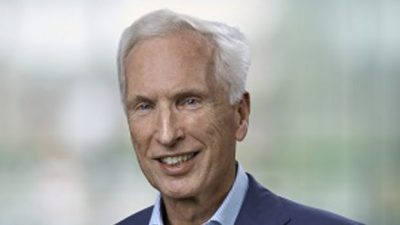



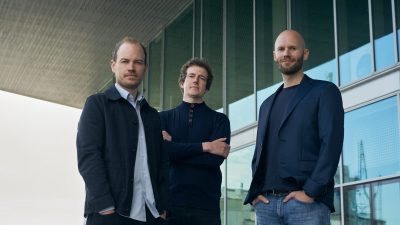
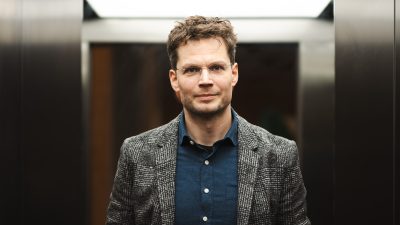
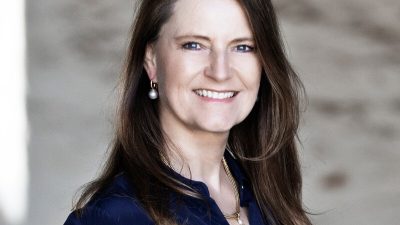

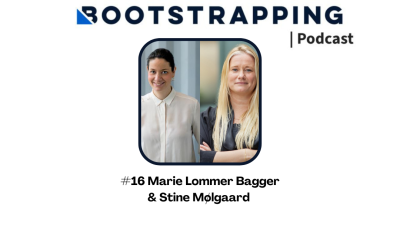

Comments